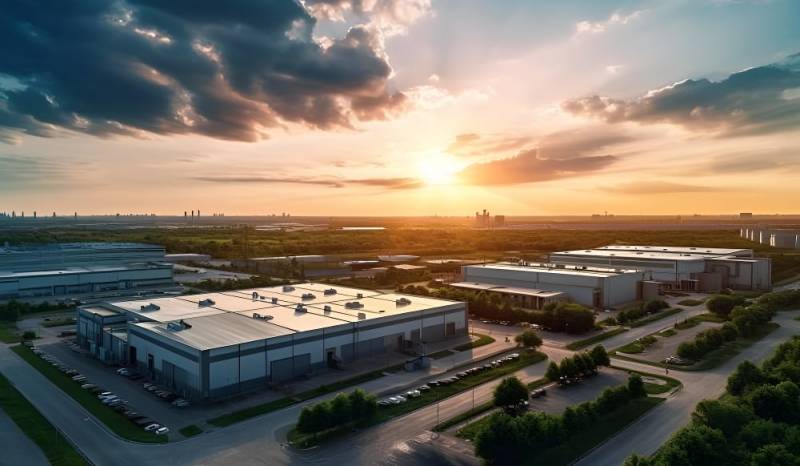All in the park: how Russian industry is changing
The number of industrial parks in Russia is growing every year. Combining several production facilities under one roof or on one territory creates the necessary synergy, simplifies property management and allows you to concentrate on work, leaving the routine to qualified specialists.
Under sanctions, when many Western partners refuse to cooperate with Russia, the creation of industrial parks is especially relevant. This allows different industries to be concentrated in one area economics, ensuring their effective interaction and development, especially in special economic zones. Within the SEZ, special tax conditions apply, which stimulates investment and promotes business development.
The peak of the creation of industrial parks in Russia occurred in the 2010s. There has been a demand from manufacturing companies for organized sites managed by specialized companies that are ready to take on non-core functions for the production worker. This makes doing business radically easier. The managers of the enterprise are engaged in the production part, leaving all economic activities to the management company.
The geopolitical position of the region plays an important role. For example, proximity to major transport routes and the presence of developed infrastructure make it possible to effectively organize logistics processes and delivery of products to consumers.
At the moment, the regions of the Far East are becoming interesting from the point of view of business development. Experts have recently noted a trend of expansion of industrial sites from the center to the periphery. Both companies that receive premises and land with affordable rent, and local authorities who create growth points with the help of such parks, are interested in this. The Moscow region is still the leader in the number of such sites, but every year new production facilities appear in the regions.
The creation of industrial parks can bring a number of benefits to the region. Firstly, it contributes to the development of the region's economy, as it creates new jobs and attracts investment. Secondly, it improves the infrastructure of the region, as it requires the construction of roads, bridges, railways and other facilities. Thirdly, it promotes the development of scientific research and of technologies, which can lead to the creation of new products and services. The latter is especially applicable to technology parks, which, as a rule, are designed for the production of innovative products that require, in addition to a production site, also a scientific base. According to experts, in order to equalize regional imbalances, it is necessary at the state level to stimulate the creation of organized sites for industrial parks throughout Russia, which will contribute to the creation of local points of attraction for investments, labor resources and a gradual redistribution of accents in the country’s socio-economic development.
There is another important advantage in the creation of such industrial centers. We inherited huge factory areas from the Soviet Union, most of which were abandoned in the 90s. Even if production is recreated in the same place, such territories are often not needed. Technologies do not stand still, and what previously several thousand workers produced on an area of 100 hectares can now be done by 100 specialists in one or two workshops. The question remains: what to do with this huge Soviet legacy? The solution is to create several production facilities under one roof on old industrial sites.
Today, more than 450 industrial and technology parks are registered in Russia. Of these, about 130 sites are currently being created. The occupancy level of industrial parks in the leading regions is approaching 80%; a number of parks are 100% occupied. In recent years, there has been a transition from quantitative growth to qualitative changes, including the creation of a comfortable environment for residents and the development of services provided by management companies. In conditions when enterprises must fight for highly qualified specialists, the winner is not only those who, in addition to high salaries, offer comfortable working conditions. Extended health insurance, massage chairs in the office and even your own spa can become a trump card in the fight against competitors.
The range of products produced in industrial and technology parks is expanding every year. For example, in Kaluga there are now plans to create a production of drones, and in the Tula region they are preparing to launch the production of engines for passenger cars. In Karelia, a technopark is in the process of being created, where food products will be produced using local raw materials: fish, berries, mushrooms, algae.
At the same time, the number of children's technology parks is expanding in Russia, where schoolchildren and students take their first steps in the development and implementation of innovations. The number of “Quantoriums,” as such parks are called, has already exceeded one hundred. Their creation is a merit of the national project “Education”.
During major changes in the global economy, it is very important to quickly respond to what is happening and make non-trivial management decisions in order to stay afloat. In such conditions, industrial parks are an excellent choice, as they guarantee quick access for manufacturers to sites prepared for their needs. Moreover, such specialized locations help to save significantly on production costs, since resources are provided centrally there. It also reduces some risks for the manufacturer, promotes cooperation and increases synergy in production life. It is likely that in light of ongoing changes in the economy, the role of industrial parks will only increase.
Modern industrial parks are platforms where the capabilities of large Russian companies and the efficiency of small and medium-sized businesses are combined. This combination allows them to solve the problems of state industrial policy. Infrastructural preparation and management flexibility make parks the main drivers of import substitution and help consolidate best practices and initiatives for the development of the country’s own production base.

Information